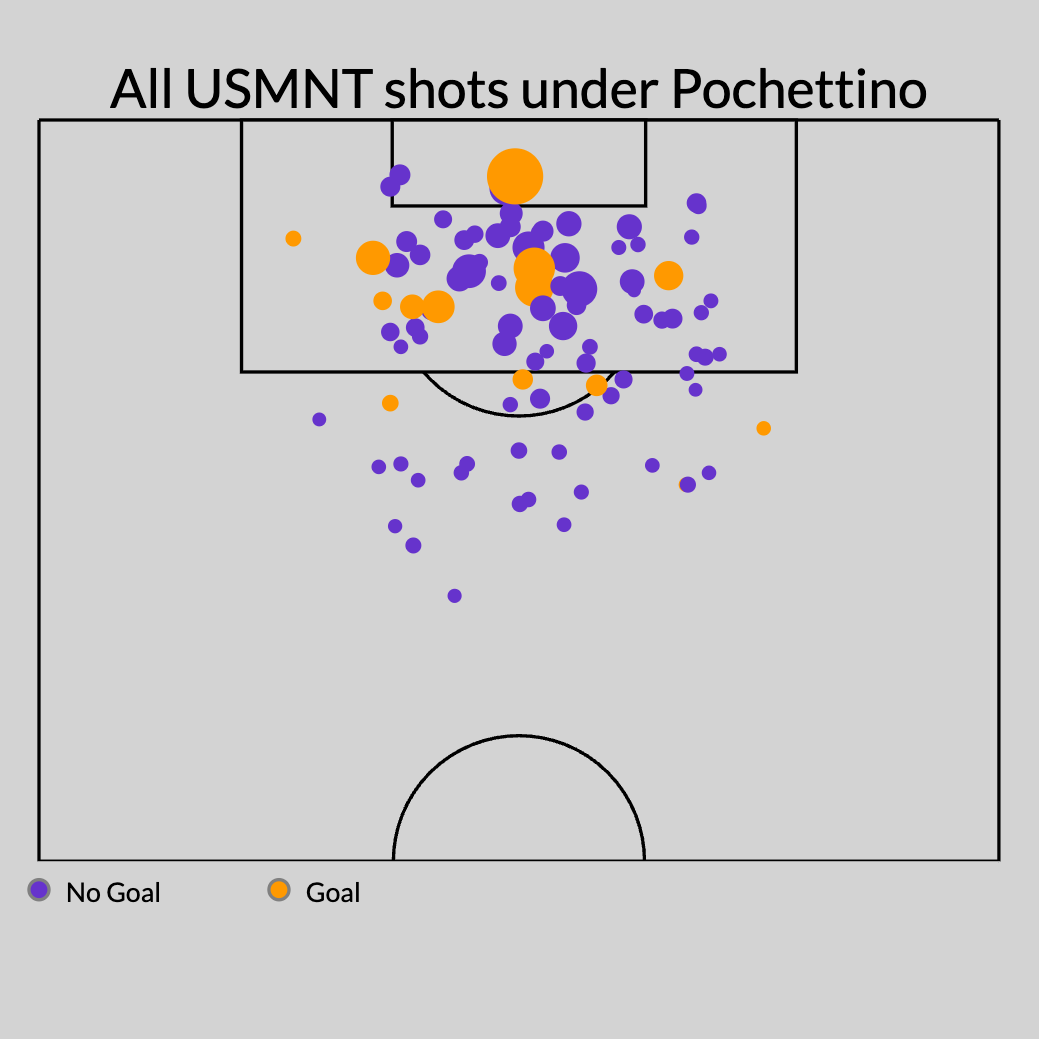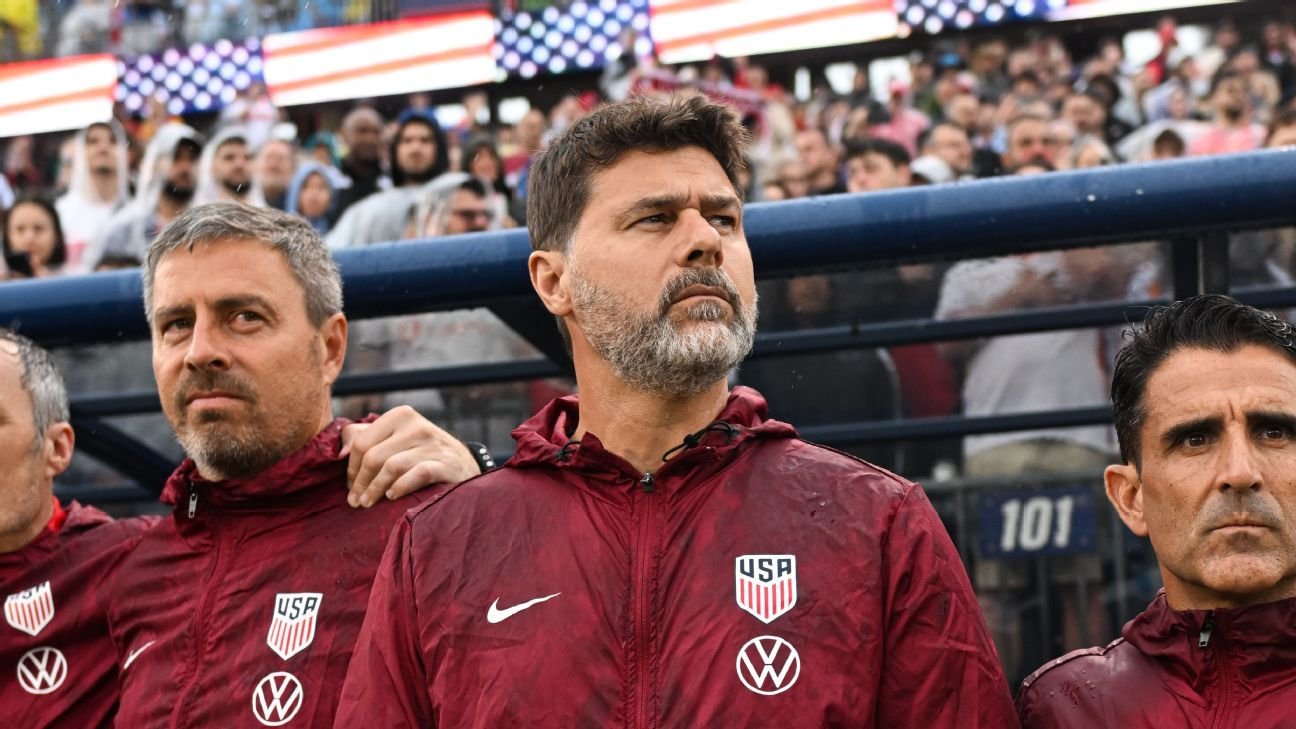The US Men’s National Team (USMNT) faced a largely forgettable 2-1 defeat against Turkey last week, yet two moments may linger in the memory: Jack McGlynn netting his inaugural goal for the team and the unfortunate own goal by Johnny Cardoso, who inadvertently redirected the ball into his own net off Arda Güler’s shin.
However, a key moment of the exhibition match occurred just before the ball crossed goalkeeper Matt Freese’s line. After Alex Freeman dispossessed Juventus player Kenan Yildiz near the USMNT’s penalty area, he had a chance to send a swift, long ball to the unoccupied left flank, as Turkey was still restructuring its defense. Instead, Cardoso opted for a cautious pass to Chris Richards, prompting USMNT manager Mauricio Pochettino to visibly express frustration. Moments later, Freese was left retrieving the ball from his net.
While the goal stemmed from bad luck—first with the deflection that caught everyone off guard, then leading to the ball finding the net—it epitomized a significant issue within Pochettino’s approach: the team’s slow pace. Recent months have shifted away from the frenetic style that characterized much of the modern USMNT era.
Pochettino is aware of this issue; he commented on the play after the match and made additional remarks following a 1-0 defeat against Panama in the Nations League semifinals. To compete effectively at the World Cup next summer, he must instill a faster rhythm amongst his players.
Why Pochettino’s USMNT Struggles with Speed
Having led the USMNT for just nine matches, convention suggests waiting for ten before making judgments. However, with only three competitive games and a fourth that lacked full competitiveness, the variations in rosters and lineups across these international breaks render early conclusions somewhat limited.
The contrast between Pochettino’s strategy and that of his predecessor, Gregg Berhalter, is striking, particularly in possession structure. While Berhalter’s approach enforced more rigid positional play, Pochettino has allowed players the flexibility to navigate defensive challenges autonomously.
Midfielder Luca de la Torre shared that the pressing strategy under Pochettino is more aggressive from goal kicks, emphasizing play within the opponent’s half. He noted the greater freedom players have to position themselves tactically. Likewise, Malik Tillman emphasized the offensive players’ enhanced freedom to maneuver on the field, contrasting with the more confined positioning under Berhalter.
Despite the uncertainty surrounding the effectiveness of either strategy, it’s clear that the relational style of play requires time to develop a mutual understanding among players, especially with frequent lineup changes. This might explain the team’s sluggishness in moving the ball under Pochettino’s management. When players are unsure of their teammates’ positions, decision-making becomes challenging.
According to Stats Perform, Pochettino’s team ranks lowest among managers with at least five games for:
– Ball movement speed: 1.03 meters per second
– Possessions per match: 82.1
The initial metric directly denotes how swiftly the ball is advanced toward the opponent’s goal, while the latter indicates the volatility of the match flow. For context, Greece’s successful teams tended to thrive in high-possession contexts, whereas Berhalter’s tenure averaged 1.34 meters per second and 87.8 possessions per match.
Nonetheless, a slower style can still yield success; teams like Manchester City and Arsenal have demonstrated that methodical play can achieve results. Yet, Europe’s top teams—such as PSG, Liverpool, and Barcelona—typically favor a quicker pace, which aligns better with the skill set of many USMNT players.
The Need for Speed: Adapting to Player Styles
A slower approach can minimize opponent opportunities and generate quality chances. Defensively, Pochettino’s team has fared well, allowing only three total shots against Panama for 0.1 expected goals—a promising statistic for potential World Cup success.
However, the challenge lies in creating high-quality offensive chances. Pochettino’s squad averages merely 10.4 shots per game, a figure not surpassed since Dave Sarachan’s interim management. Although they have registered five shots valued at over 0.33 expected goals, this pales in comparison to Berhalter’s teams at 1.6 per game.
The graph below illustrates the expected-goal value of shot attempts during Pochettino’s tenure:

Ultimately, the slow approach does not complement the attributes of many standout USMNT players. In transitions, Folarin Balogun thrived at Reims’ quickstyle, while Pulisic and Weah excel when attacking unsettled defenses. Similarly, Malik Tillman has demonstrated success in open tactics at PSV, and Tyler Adams has shone with high-energy teams like Bournemouth and Leeds.
Despite their impressive individual capabilities, the USMNT has yet to maximize their potential under Pochettino’s slower system. The potential impact of set pieces, which have proven crucial for many teams, is yet to be fully exploited under Pochettino’s guidance, as the team averages the fewest set piece shots attempted compared to previous managers.
With Pochettino’s first nine matches revealing a disconnect between his intended high-tempo style and a team adept at playing faster, the upcoming Gold Cup and World Cup present significant challenges. The USMNT must discover a balance to routinely generate quality goal-scoring opportunities. The pressing concern remains: How can they better harness their players’ speed and invigorate their game ahead of the World Cup?

